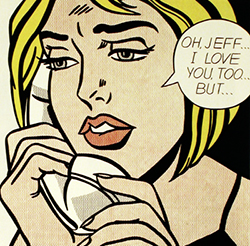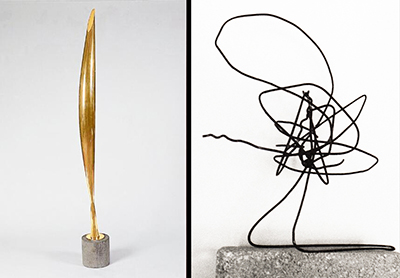MENU
The Electronic Scholarly Publishing Project: Providing access to classic scientific papers and other scholarly materials, since 1993. More About: ESP | OUR CONTENT | THIS WEBSITE | WHAT'S NEW | WHAT'S HOT
Comparative Timelines
The ESP Timeline (one of the site's most popular features) has been completely updated to allow the user to select (using the timeline controls above each column) different topics for the left and right sides of the display.
Select:
New Left Column
New Left Column
Dates
Decade
New Right Column
New Right Column
(no entry for this year)
1960
Alister Hardy promotes his Homo aquaticus or "aquatic ape" hypothesis to the British Sub Aqua Club. He will follow up this announcement with several magazine articles.
(no entry for this year)
1961

 F. Jacob and J. Monod publish "Genetic regulatory mechanisms in the synthesis of proteins," a paper in which the theory of the OPERON is developed.
F. Jacob and J. Monod publish "Genetic regulatory mechanisms in the synthesis of proteins," a paper in which the theory of the OPERON is developed.
(no entry for this year)
1962
Human geneticist James Neel develops the "thrifty genotype" hypothesis that human ancestors endured feast-famine cycles that made the human body very effective in storing fat for lean times.
(no entry for this year)
1963
(no entry for this year)
 painting by Roy Lichtenstein: Oh, Jeff...I Love You, Too...But... (sometimes Oh, Jeff). Like many of Lichtenstein's works its title comes from the speech balloon in the painting. Although many sources, such as the Encyclopedia of Art, describe Whaam! and Drowning Girl as Lichtenstein's most famous works, artist Vian Shamounki Borchert believes it is this piece, calling it his Mona Lisa. The Daily Mail listed it along with Whaam! and Drowning Girl as one of his most famous at the time of its 2013 Retrospective at the Tate Modern. Borchert notes that this painting captures "the magic" of its "anguished and yes [sic] beautiful blue eyed, blond hair, full lips" female subject while presenting "sad eyes that seem to give in to what seems to be a doomed love affair". Lichtenstein in 1967 Measuring 48 in × 48 inches, Oh, Jeff...I Love You, Too...But... is among the most famous of his early romance comic derivative works from the period when he was adapting cartoons and advertisements into his style via Ben-Day dots.
painting by Roy Lichtenstein: Oh, Jeff...I Love You, Too...But... (sometimes Oh, Jeff). Like many of Lichtenstein's works its title comes from the speech balloon in the painting. Although many sources, such as the Encyclopedia of Art, describe Whaam! and Drowning Girl as Lichtenstein's most famous works, artist Vian Shamounki Borchert believes it is this piece, calling it his Mona Lisa. The Daily Mail listed it along with Whaam! and Drowning Girl as one of his most famous at the time of its 2013 Retrospective at the Tate Modern. Borchert notes that this painting captures "the magic" of its "anguished and yes [sic] beautiful blue eyed, blond hair, full lips" female subject while presenting "sad eyes that seem to give in to what seems to be a doomed love affair". Lichtenstein in 1967 Measuring 48 in × 48 inches, Oh, Jeff...I Love You, Too...But... is among the most famous of his early romance comic derivative works from the period when he was adapting cartoons and advertisements into his style via Ben-Day dots.
 An art exhibit is held at Stanford University, featuring Brancusi's Bird in Space (loaned by student Richard Holkar) as its major piece. Another work entitled Soul in Flight — a "sculpture" consisting of two bent coat hangers — is surreptitiously added to the exhibit by D. Heskett and R. Robbins (student colleagues of Holkar), without the bother of going through the submission process. The coat-hanger piece remains as part of the exhibit for several days, until it is accidentally bumped and comes apart during an evening cleaning of the displays.
An art exhibit is held at Stanford University, featuring Brancusi's Bird in Space (loaned by student Richard Holkar) as its major piece. Another work entitled Soul in Flight — a "sculpture" consisting of two bent coat hangers — is surreptitiously added to the exhibit by D. Heskett and R. Robbins (student colleagues of Holkar), without the bother of going through the submission process. The coat-hanger piece remains as part of the exhibit for several days, until it is accidentally bumped and comes apart during an evening cleaning of the displays.
1964
(no entry for this year)
(no entry for this year)
1965
(no entry for this year)
1966
Willi Hennig works on a new approach to assessing evolutionary relationships, known as cladistics. Although it will be hotly debated, this technique will eventually become standard practice in paleontology, botany and zoology.
(no entry for this year)
1967
Lynn Sagan (later Lynn Margulis) hypothesizes that chloroplasts originated as cyanobacteria, and that mitochondria originated as bacteria. She suggests that both were engulfed by other cells and began functioning as symbionts.
(no entry for this year)
1968
A.G. Cairns-Smith publishes a paper suggesting that the first life on Earth might have been fine-grained clay crystals. He will publish on this topic several more times before his death, but the experimental evidence will remain scant, perhaps in part because sufficient technology doesn't yet exist to test the hypothesis.
(no entry for this year)
1969
R. H. Whittaker proposes to divide all living things into five kingdoms: Animalia, Plantae, Fungi, Protista and Monera.
ESP Quick Facts
ESP Origins
In the early 1990's, Robert Robbins was a faculty member at Johns Hopkins, where he directed the informatics core of GDB — the human gene-mapping database of the international human genome project. To share papers with colleagues around the world, he set up a small paper-sharing section on his personal web page. This small project evolved into The Electronic Scholarly Publishing Project.
ESP Support
In 1995, Robbins became the VP/IT of the Fred Hutchinson Cancer Research Center in Seattle, WA. Soon after arriving in Seattle, Robbins secured funding, through the ELSI component of the US Human Genome Project, to create the original ESP.ORG web site, with the formal goal of providing free, world-wide access to the literature of classical genetics.
ESP Rationale
Although the methods of molecular biology can seem almost magical to the uninitiated, the original techniques of classical genetics are readily appreciated by one and all: cross individuals that differ in some inherited trait, collect all of the progeny, score their attributes, and propose mechanisms to explain the patterns of inheritance observed.
ESP Goal
In reading the early works of classical genetics, one is drawn, almost inexorably, into ever more complex models, until molecular explanations begin to seem both necessary and natural. At that point, the tools for understanding genome research are at hand. Assisting readers reach this point was the original goal of The Electronic Scholarly Publishing Project.
ESP Usage
Usage of the site grew rapidly and has remained high. Faculty began to use the site for their assigned readings. Other on-line publishers, ranging from The New York Times to Nature referenced ESP materials in their own publications. Nobel laureates (e.g., Joshua Lederberg) regularly used the site and even wrote to suggest changes and improvements.
ESP Content
When the site began, no journals were making their early content available in digital format. As a result, ESP was obliged to digitize classic literature before it could be made available. For many important papers — such as Mendel's original paper or the first genetic map — ESP had to produce entirely new typeset versions of the works, if they were to be available in a high-quality format.
ESP Help
Early support from the DOE component of the Human Genome Project was critically important for getting the ESP project on a firm foundation. Since that funding ended (nearly 20 years ago), the project has been operated as a purely volunteer effort. Anyone wishing to assist in these efforts should send an email to Robbins.
ESP Plans
With the development of methods for adding typeset side notes to PDF files, the ESP project now plans to add annotated versions of some classical papers to its holdings. We also plan to add new reference and pedagogical material. We have already started providing regularly updated, comprehensive bibliographies to the ESP.ORG site.
ESP Picks from Around the Web (updated 06 MAR 2017 )
Old Science

Weird Science

Treating Disease with Fecal Transplantation
Fossils of miniature humans (hobbits) discovered in Indonesia

Dinosaur tail, complete with feathers, found preserved in amber.
Astronomy

Mysterious fast radio burst (FRB) detected in the distant universe.